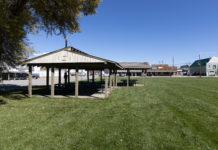A coalition of environmental groups today filed a lawsuit in federal court to prevent additional diversions from the already struggling Colorado River. The suit questions the need for the Windy Gap Firming Project, which is a plan to divert on average an additional 30,000 acre-feet or 9 billion gallons of water annually from our state’s namesake river to pipe, store, and use on the Front Range. Save the Colorado, Save the Poudre, WildEarth Guardians, Living Rivers and Waterkeeper Alliance challenge the environmental review and approvals by the U.S. Bureau of Reclamation and the U.S. Army Corps of Engineers that gave the green light for this new diversion.
“This project is a terrible idea and the Bureau of Reclamation’s decision to support it was completely irresponsible,” said Dan Beard, former Commissioner of the U.S. Bureau of Reclamation and current Save The Colorado board member. “The water supply situation on the Colorado River is in bankruptcy right now, and this project is like going to the ATM for another deficit withdrawal.”
The Windy Gap Firming Project is a proposal by the Northern Colorado Water Conservancy District seeking to divert more water from the Colorado River, pump it through the existing facilities of the Colorado-Big Thompson Project to the eastern slope, store the water in the new 90,000 acre-feet Chimney Hollow reservoir near Loveland, and finally deliver it for municipal and industrial uses by the project participants. The Firming Project comes on the heels of the former and botched Windy Gap Project—that sought to increase diversions from the Colorado River in 1985 to deliver to the Front Range—but has largely failed to deliver the expected 56,000 acre-feet. The Windy Gap “Firming Project” hopes to make up for the original project’s shortfalls.
“Taking any more water out of the Colorado River or its tributaries seems like a kind of insanity right now,” said Robert F. Kennedy Jr., President of Waterkeeper Alliance. “This project would drain billions of gallons of water from the already depleted Colorado River while ignoring more sustainable alternatives.”
Reclamation and the Corps spent more than a decade conducting the environmental review of the Windy Gap Firming Project; however, the agencies’ effort was woefully inadequate. As one example, the “alternatives analysis” did not analyze any actual alternatives to the project and only discussed options that would further drain the Colorado River. Even worse, the Bureau and Corps’ environmental review concluded that the project was the “Least Environmentally Damaging Practicable Alternative” without actually analyzing any true alternatives including water conservation, water recycling, or obtaining water from farmers, all tried and true methods for getting new water on the Front Range of Colorado.
“Federal agencies must evaluate not only the impacts of a proposed project, but also alternatives to the intended course of action,” said Zach Lass, Student Attorney at the University of Denver Sturm College of Law. “Reclamation and the Corps fell victim to a sunk costs bias that infected the entire review and approval process when they failed to consider alternatives that did not involve spending more money trying to salvage their failed Windy Gap Project.”
The Colorado River in Grand County already loses 70 percent of its flow by the time it reaches the town of Hot Sulphur Springs. If the Windy Gap Firming Project is built – along with Denver Water’s proposed Moffat Project – that loss would reach 80 percent.
“Water agencies that want more water need to focus on alternatives like conservation, water recycling, and leasing or buying water from farmers,” said Gary Wockner, Director of Save The Colorado. “Draining 80 percent of the water out of the Colorado River is ecological annihilation. If you try to further dam and drain the Colorado River or its tributaries, we will do everything we can to stop you.”
Climate change is also taking its toll on the Colorado River. A new scientific article released this week by the U.S. Geologic Survey, Evidence that Recent Warming is Reducing Upper Colorado River Flows, concluded that temperature increases over the past three decades have already reduced flows in the Upper Colorado River Basin by 7 percent. These significant flow reductions due to increasing temperature are the largest ever documented. The predicted flow declines for the Upper Colorado River Basin for the remainder of the century are equally bleak and estimate flow declines as high as 40 percent.
“The Colorado River is the lifeblood of the desert southwest,” said Jen Pelz, the Wild Rivers Program Director at WildEarth Guardians. “Every drop of additional water taken from the river will come at the expense of the quality of life we have come to love here in Colorado. Further draining our lifeline is unacceptable.”
The organizations participating in this litigation are represented by the Environmental Law Clinic at the University of Denver Sturm College of Law.







